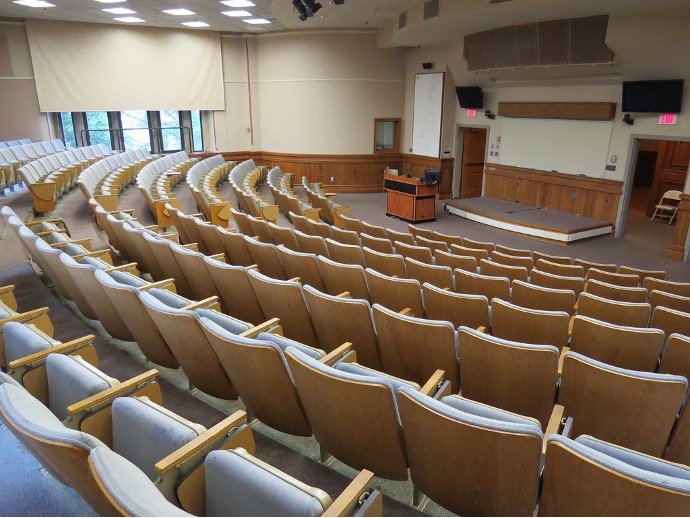Seminar Blogs
“Science-fictionalizing Contemporary Visual Epistemologies: What Might Projection Technologies of the Future Look Like?” – Danny Steur
In “Next Slide Please,” Jennifer Eisenhauer discusses a genealogy of image projection technologies: the magic lantern, the optical lantern and the nowadays omnipresent PowerPoint (2006, 199, 211). Or, more accurately: Eisenhauer dives into the discourses surrounding, and the visual epistemologies belonging to, these projection technologies, which have shifted from magic vision (the magic lantern used to project fictive “ghosts and apparitions” (2006, 200)) to scientific vision (extending human vision in a scientific, objective manner through projected images (2006, 200)) to corporate vision (using projection as a persuasive method, relaying arguments through constructed images and text (2006, 208)). Overall, Eisenhauer emphasizes that the uses and meanings of technologies are not innate but constructed – and they shape and are shaped by our understandings of the visual (2006, 211).
Lately, I have been reading a lot of science-fiction and academic reflections on the genre’s speculative potential. One lesson that has taught me is that such fictional worlds are, of course, never simply visions of a future-to-be but reflective of our contemporary here-and-now – they tell more of our present than they do our future (Jameson 1982, 148, 153). Furthermore, these worlds also oftentimes provide us with imaginative futuristic visions that we may well engage with to re-think our present, and the assumptions underlying contemporary practices (Zamalin 2019, 5-6). Given science-fiction’s preoccupation with futuristic technologies, I figure it might be productive to look at some science-fictional visions of visual technologies and their epistemological consequences, to see how we might otherwise imagine contemporary educational settings.

What assumptions are imbricated in this classroom set-up? Can we imagine this differently?
Extrapolating a trajectory of visual technologies into the future, what quickly comes to mind is virtual reality applications. It is not that much of a stretch to imagine VR-headsets being implemented in classroom settings. Though VR is often praised as an “empathy machine” (Benjamin 2019, 162), it is difficult to not worry about students’ sociality in the case of hyper-individualized teaching. Since one of the largest applications of VR-headsets nowadays is in the realm of videogaming, we might imagine such teaching also to include a kind of interactivity, adding a fourth discourse to Eisenhauer’s visual epistemologies: the ability to let students interactively participate. However, this reeks of a techno-fix to a social concern, which technological fixes can only partly address, predicated as they often are on a dehumanizing, “thin cybernetic view on intelligence” (Gidley 2017, 138).
More positive speculation might concern holographic projections, which align closely with the technologies Eisenhauer delineates since they too address a larger audience simultaneously. They seem more productive, because of the pedagogical setting they could engender: it would not necessitate the entire classroom to face the same way. Such rectilinear classroom layouts (think of most lecture halls) echo strict disciplining and hierarchical relations between student and teacher. Three-dimensional holograms, however, might enable a circular layout that projections like PowerPoint cannot: everybody instead situated around something, which may foster greater responsiveness between students themselves and their teacher, and which encourages debate in a more equal way – teachers can almost always learn something from students too, after all. Naturally, holograms seem a long way away, but they (and other visions of possible futures) stimulate the imagination and encourage us to rethink our present.
References:
- Benjamin, Ruha. 2019. Race After Technology: Abolitionist Tools for the New Jim Code. Cambridge: Polity Press.
- Eisenhauer, Jennifer F. 2006. “Next Slide Please: The Magical, Scientific, and Corporate Discourses of Visual Projection Technologies.” Studies in Art Education 47 (3): 198–214.
- Gidley, Jennifer M. 2017. The Future: A Very Short Introduction. Oxford: Oxford University Press.
- Jameson, Fredric. 1982. “Progress versus Utopia; Or, Can We Imagine the Future?” Science Fiction Studies 9 (2): 147–158.
- Zamalin, Alex. 2019. Black Utopia: The History of an Idea from Black Nationalism to Afrofuturism. New York: Columbia University Press.

